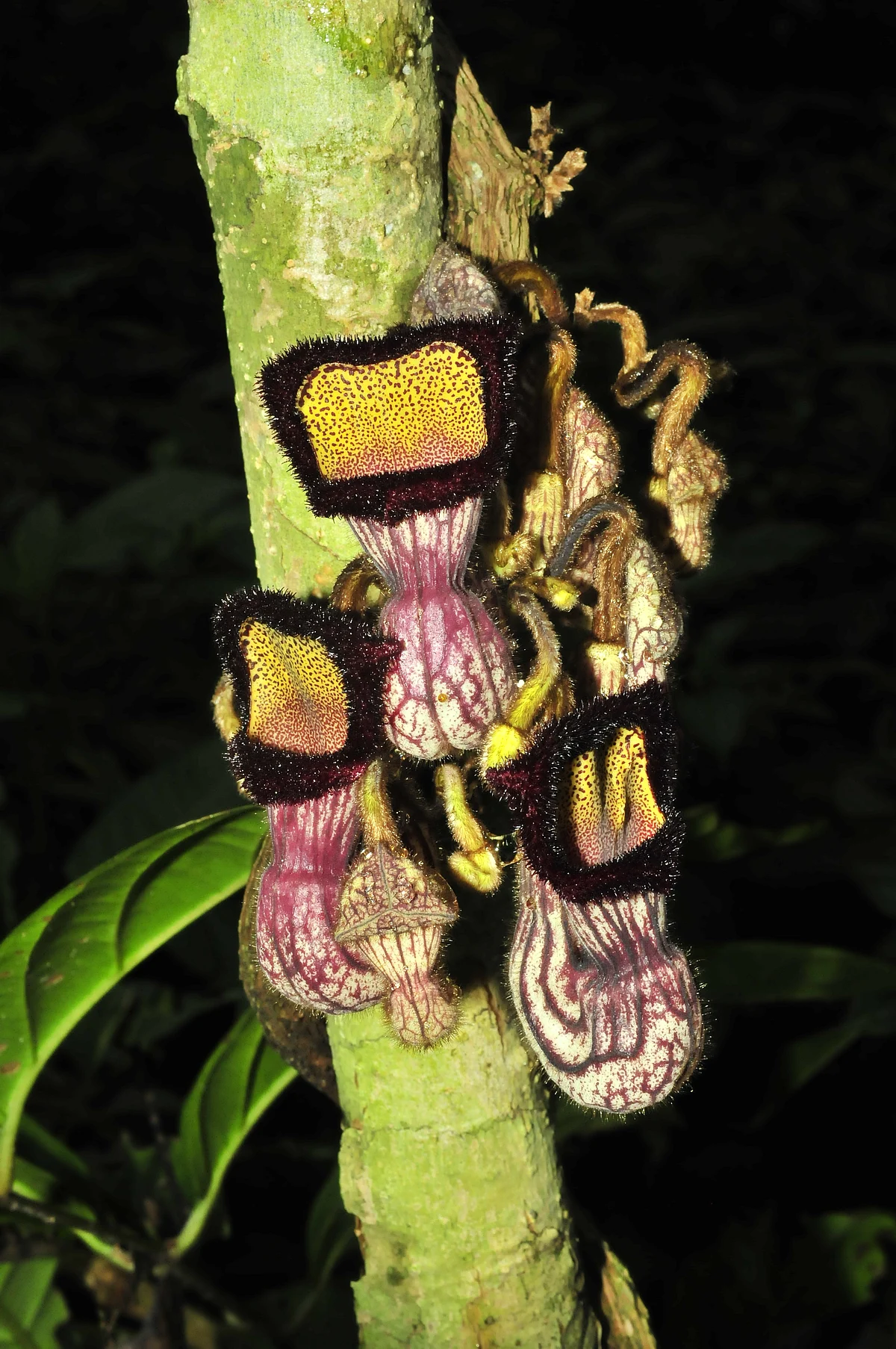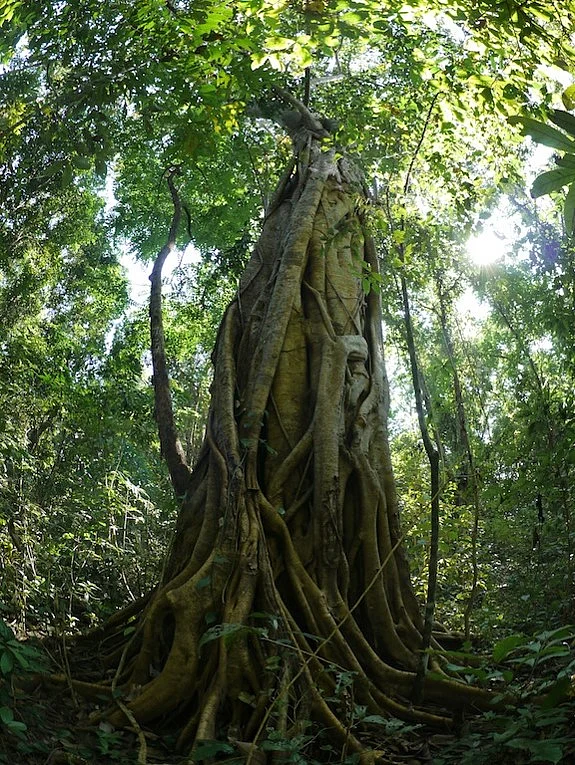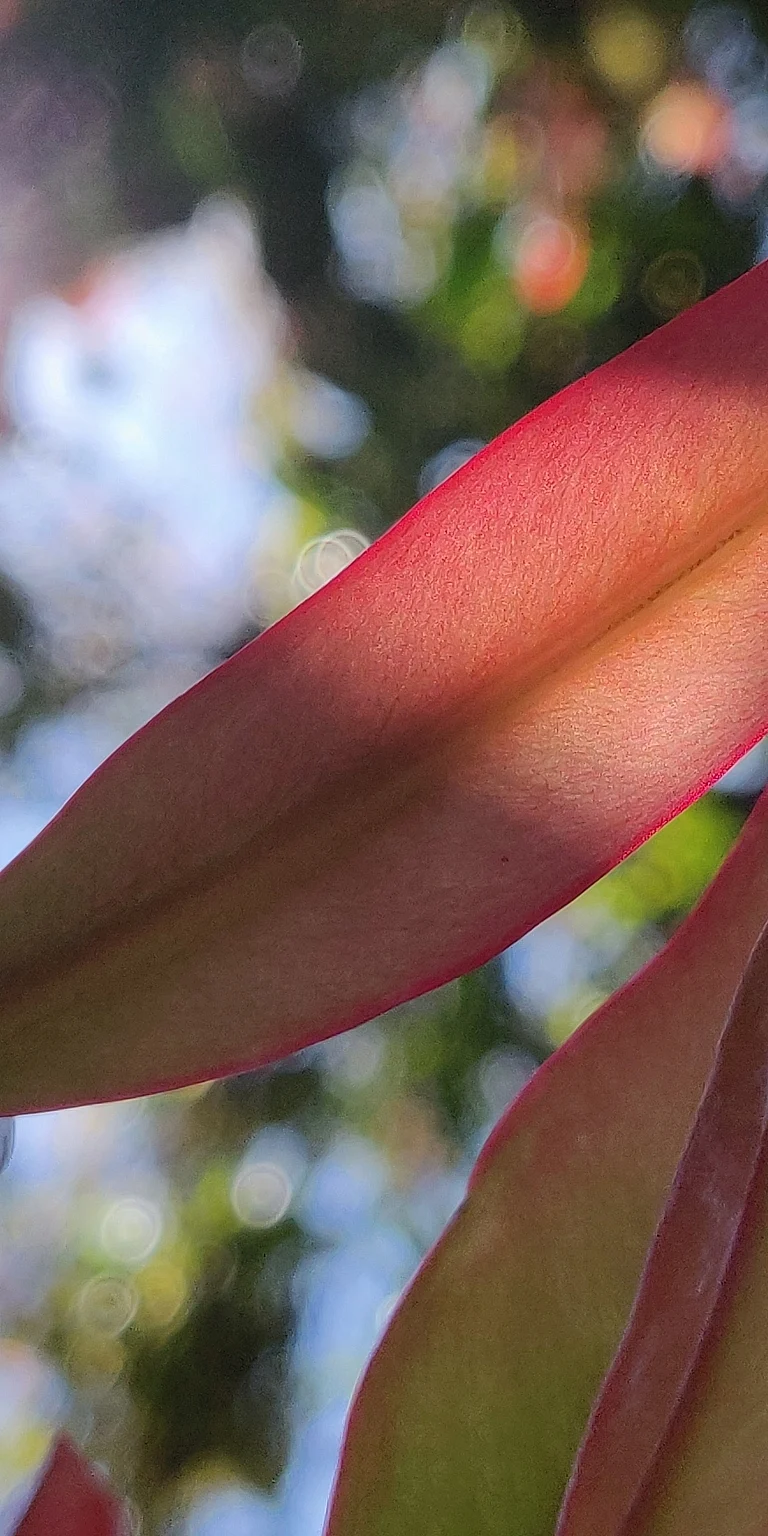Long-term monitoring of trees, hornbill nests and roosts
Long-term continuous records of phenological phenomenon are important, in providing reliable information to estimate the effects of climatic fluctuations and environmental changes on flowering and fruiting phenology of trees and hornbill breeding
Phenology
Phenology is the study of periodicity in the life-cycle events of plants and animals, which are influenced by seasonal variations in temperature, rainfall, and light. The sensitivity of these life-cycle events to inter-annual variations in climate make phenological studies of great importance in addressing critical questions related to global climate change. Long term continuous monitoring of leafing, flowering and fruiting patterns are important, in understanding the effects of climatic fluctuations and environmental changes on the forest ecosystem.
Tree Phenology
Tree phenology plays a critical role in determining a) reproductive success in plant species, b) the feeding and breeding ecology of frugivores and c) dispersal and foraging behaviors of frugivorous bird and mammal species.
Seasonal patterns of development in forest trees have a major influence on animal populations. There is a well-established relationship between food availability and successful reproduction in a variety of avian taxa. The breeding biology trends in hornbills such as fluctuation in the length, success and start date of breeding season could potentially be linked to altering phenological patterns of their food plant species. But there is currently a paucity of information about the long-term phenological patterns of tree species. It is also important to have long-term data on plant phenology patterns with respect to tracking possible effects of climate change.
Tree Phenology Monitoring in Pakke
Currently we are focusing on our phenology project from the perspective of hornbills and climate change. We are also interested in trying to understand the role of phenology in other plant-animal interactions taking place in the complex tropical semi-evergreen forests of Pakke.
Our main objectives are:
1. Systematically monitor the phenology of bird-dispersed species to understand
a) year-around fruit availability patterns
b) the effect of this variation on initiation of breeding and nesting success of hornbills
c) how are phenological patterns and breeding of hornbills related to environmental factors and changing climate in the long-term?
2. We are also assessing the phenology of several other mammal-dispersed and mechanically-dispersed species to understand seasonal and annual variations in flower and fruit availability patterns and long-term responses of tree species to climatic variation.
We are presently monitoring 716 trees belonging to 44 different tree species. We monitor these tree twice a month. Presence/absence of following pheno-phases are recorded (flower buds, flower, unripe fruit, ripe fruit, young leaves, mature leaves and dry or no leaves).
We have set up a permanent state-of-the-art weather station (donated by Agumbe Rainforest Research Station) for long-term weather monitoring from April 2011.
Hornbill Nests
The status of hornbills in most of the north-east region is precarious due to hunting by several tribal communities. Most hornbill species have specialized requirements and are threatened and vulnerable in varying degrees, because of traditional hunting and the recent accelerated habitat loss and modification due to logging, shifting cultivation and clearing of land for settlements and agriculture.
Hornbills have a very unique nesting pattern where the female enters the nest cavity, seals herself inside (leaving only a small slit for her beak) with her saliva and dropping and stays inside for 4-5 months (March-July) exiting the nest with her chicks at the end of the breeding season
Three species of hornbills (Great Hornbill, Wreathed Hornbill, Oriental Pied Hornbill) occur in Pakke's forests, while the globally endangered Rufous-necked Hornbill is restricted to higher elevations. A four-year (1997-2000) study in Pakke on these sympatric hornbills has provided an understanding into various aspects of hornbill biology including their breeding biology, diet, nest and roost site requirements and their functional role as seed dispersers.
In 2003, we initiated a long-term monitoring program in Pakke to ensure protection of hornbills and crucial nesting and roosting habitat, continue scientific monitoring of hornbill populations, and assess nest site availability.
Monitoring Nests
The breeding season of the three hornbill species (Great Hornbill, Wreathed Hornbill, Oriental Pied Hornbill) in Pakke starts by first week of March and ends by last week of July to first week of August.
Presently we are monitoring 38 hornbill nest trees in the park . In the breeding season, monitoring consists of exploring forests to find new nest trees, intensively monitor existing nest trees to document entry date of the female, exit date of the chicks, success rate, reasons for failure and identification of conservation measures.
Roost sites
Roosting is an interesting phenomenon shown by hornbills where tens to hundreds of hornbills fly together to a common site in the evenings to rest together.
Hornbills in Pakke also roost communally. The Great hornbills (60+) roost communally only in the non-breeding season. The Wreathed hornbills are seen in the largest numbers (100+) and roost throughout the year. Mixed species roosts have only been recorded in the non-breeding season. Most of the known roost sites are close to habitation in open grassland habitats near rivers, perennial streams or on cliff faces along streams. Counts at roost sites at the end of the breeding season enables an estimation of population recruitment as juveniles accompany the parent birds to roost sites with at least 13-23% of the population being of juvenile/sub-adult birds.
Some of the roosting sites are near the inter-state boundary which is used every year in August-November and sporadically in much smaller numbers at other times. In 2004, floods and erosion caused loss of crucial roost trees;however, these roosts continue to be used despite increased human disturbance at some roost sites. There is a need to continue monitoring at known roost sites and locate and map additional roosts throughout the area to enable long-term protection of these crucial sites, some of which remain vulnerable to disturbance.
Presently we are monitoring 2 known roost sites and searching for new ones inside the park and the reserve forest.



